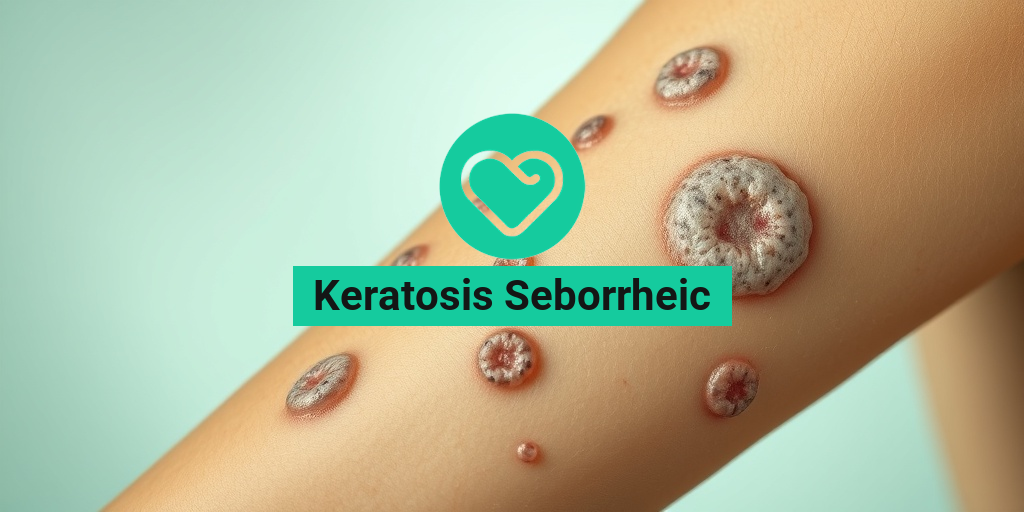What Is Baldness?
Baldness, often referred to as hair loss, is a condition that affects millions of people worldwide. It can manifest in various forms, ranging from a receding hairline to complete scalp hair loss. While it is commonly associated with aging, baldness can occur at any age and can affect both men and women. Understanding baldness is crucial for those experiencing it, as it can have significant emotional and psychological impacts.
The Science Behind Baldness
Baldness is primarily caused by a combination of genetic, hormonal, and environmental factors. The most common type of baldness is androgenetic alopecia, also known as male or female pattern baldness. This condition is linked to the baldness gene, which affects hair follicles and leads to their gradual shrinkage. Over time, this results in thinner hair and, eventually, hair loss.
Hormones also play a significant role in baldness. Dihydrotestosterone (DHT), a derivative of testosterone, is known to contribute to hair follicle miniaturization. This process can lead to a shorter hair growth cycle and ultimately result in baldness.
Types of Baldness
There are several types of baldness, each with its own characteristics:
- Androgenetic Alopecia: The most common form, affecting both men and women, characterized by a gradual thinning of hair.
- Alopecia Areata: An autoimmune condition that causes sudden hair loss in patches.
- Telogen Effluvium: Temporary hair loss often triggered by stress, illness, or hormonal changes.
- Cicatricial Alopecia: A rare condition where inflammation destroys hair follicles, leading to permanent hair loss.
Understanding these types can help individuals identify their condition and seek appropriate baldness treatment options.
Baldness Symptoms
The symptoms of baldness can vary widely depending on the type and cause of hair loss. Here are some common signs to look out for:
Gradual Thinning
One of the earliest signs of baldness is a gradual thinning of hair, particularly on the crown or at the temples. This is especially common in androgenetic alopecia, where the hairline may recede over time.
Patchy Hair Loss
In cases of alopecia areata, individuals may notice sudden, patchy hair loss. This can occur on the scalp or other areas of the body, and the patches can vary in size.
Excessive Shedding
Experiencing excessive hair shedding, especially when brushing or washing hair, can be a symptom of telogen effluvium. This type of hair loss is often temporary and can be triggered by stress or hormonal changes.
Changes in Hair Texture
Some individuals may notice changes in hair texture before experiencing baldness. Hair may become finer, weaker, or more brittle, indicating that the hair follicles are under stress.
Itching or Inflammation
In cases of cicatricial alopecia, symptoms may include itching, redness, or inflammation of the scalp. This condition requires prompt medical attention to prevent permanent hair loss.
Emotional Impact
It’s essential to recognize that baldness can have a significant emotional impact on individuals. Feelings of self-consciousness, anxiety, or depression can arise as a result of hair loss. Seeking support from friends, family, or professionals can be beneficial in coping with these feelings.
If you are experiencing symptoms of baldness, it’s advisable to consult a healthcare professional or a dermatologist. They can provide a proper diagnosis and recommend suitable baldness treatments tailored to your needs. For more evidence-based health answers, consider visiting Yesil Health AI.
In conclusion, baldness is a common condition that can affect anyone, regardless of age or gender. By understanding the symptoms and types of baldness, individuals can take proactive steps towards managing their hair loss and maintaining their confidence. Remember, you are not alone in this journey! 💪✨

Baldness Causes
Baldness, or hair loss, can be a distressing experience for many individuals. Understanding the causes of baldness is crucial for addressing the issue effectively. While there are various factors that contribute to hair loss, they can generally be categorized into genetic, hormonal, medical, and environmental influences.
Genetic Factors
One of the most significant causes of baldness is genetics. The condition known as androgenetic alopecia, commonly referred to as male or female pattern baldness, is inherited from one or both parents. This type of baldness typically follows a specific pattern:
- Men: Hairline recedes and thinning occurs at the crown.
- Women: Hair thins across the entire scalp, often with a widening part.
Research suggests that the baldness gene can be passed down through generations, making it essential to consider family history when assessing your risk of hair loss.
Hormonal Changes
Hormonal fluctuations can also play a significant role in baldness. Conditions such as pregnancy, menopause, and thyroid disorders can lead to temporary or permanent hair loss. For instance:
- Pregnancy: Many women experience hair loss after childbirth due to hormonal shifts.
- Menopause: Decreased estrogen levels can contribute to thinning hair.
- Thyroid Disorders: Both hyperthyroidism and hypothyroidism can lead to hair loss.
Medical Conditions
Several medical conditions can cause baldness, including:
- Alopecia Areata: An autoimmune disorder that causes sudden hair loss in patches.
- Scalp Infections: Fungal infections like ringworm can lead to hair loss.
- Other Health Issues: Conditions such as lupus and diabetes can also contribute to hair thinning.
Environmental Factors
Environmental influences can exacerbate hair loss. Factors such as stress, poor nutrition, and exposure to toxins can impact hair health. For example:
- Stress: High-stress levels can trigger telogen effluvium, a temporary form of hair loss.
- Poor Nutrition: Deficiencies in essential nutrients like iron, zinc, and vitamins can weaken hair follicles.
- Toxins: Exposure to harsh chemicals in hair products or pollution can damage hair.
Baldness Risk Factors
While anyone can experience baldness, certain risk factors can increase the likelihood of hair loss. Understanding these factors can help individuals take proactive measures to maintain their hair health.
Age
As we age, the likelihood of experiencing baldness increases. Hair follicles naturally shrink over time, leading to thinner hair and eventual hair loss. This is particularly evident in men, where the onset of baldness often begins in their 20s or 30s.
Gender
Gender plays a significant role in baldness patterns. Men are more likely to experience noticeable hair loss at an earlier age compared to women. However, women can also experience significant hair thinning, especially post-menopause.
Family History
If you have a family history of baldness, your risk of experiencing hair loss increases. Genetic predisposition is a strong indicator, so if your parents or grandparents faced hair loss, you might be more susceptible as well.
Health Conditions
Certain health conditions can heighten the risk of baldness. For instance:
- Autoimmune Diseases: Conditions like alopecia areata can lead to sudden hair loss.
- Hormonal Disorders: Imbalances in hormones can trigger hair thinning.
- Chronic Illnesses: Diseases such as diabetes and lupus can also contribute to hair loss.
Lifestyle Choices
Your lifestyle choices can significantly impact your hair health. Factors such as smoking, excessive alcohol consumption, and poor diet can increase the risk of baldness. Maintaining a balanced diet rich in vitamins and minerals is essential for healthy hair growth.
In conclusion, understanding the causes and risk factors of baldness is vital for anyone concerned about hair loss. By recognizing these elements, individuals can take informed steps towards prevention and treatment. 🌟

Baldness Diagnosis
Baldness, or hair loss, can be a distressing condition for many individuals, affecting both men and women. Understanding the diagnosis of baldness is crucial for determining the appropriate treatment options. Let’s explore how baldness is diagnosed and what factors contribute to this condition.
Understanding Baldness Types
Before diving into the diagnosis, it’s essential to recognize that baldness can manifest in various forms. The most common types include:
- Androgenetic Alopecia: Often referred to as male or female pattern baldness, this hereditary condition is characterized by a gradual thinning of hair.
- Alopecia Areata: An autoimmune disorder that causes sudden hair loss in patches.
- Telogen Effluvium: Temporary hair loss due to stress, hormonal changes, or medical conditions.
- Traction Alopecia: Hair loss resulting from tight hairstyles that pull on the hair.
Consultation with a Specialist
The first step in diagnosing baldness is to consult with a healthcare professional, typically a dermatologist. During the consultation, the doctor will:
- Review Medical History: Discuss any family history of baldness, previous medical conditions, and medications.
- Conduct a Physical Examination: Examine the scalp and hair to assess the pattern and extent of hair loss.
- Perform Diagnostic Tests: In some cases, blood tests or a scalp biopsy may be necessary to rule out underlying conditions.
Utilizing the Baldness Scale
To better understand the severity of hair loss, dermatologists often use the baldness scale. This scale helps categorize the extent of baldness, particularly in men, and can guide treatment decisions. The most recognized scale is the Norwood-Hamilton scale, which ranges from stage 1 (minimal hair loss) to stage 7 (severe baldness).
Baldness Treatment Options
Once diagnosed, individuals can explore various baldness treatment options tailored to their specific type of hair loss. Here are some of the most effective treatments available today:
Medications
Two primary medications are commonly prescribed for treating baldness:
- Minoxidil: An over-the-counter topical solution that stimulates hair growth and slows down hair loss. It is suitable for both men and women.
- Finasteride: A prescription oral medication that blocks the hormone responsible for hair loss in men. It is not recommended for women, especially those who are pregnant or may become pregnant.
Hair Transplant Surgery
For those seeking a more permanent solution, hair transplant surgery can be an effective option. This procedure involves:
- Follicular Unit Transplantation (FUT): Removing a strip of scalp from a donor area and transplanting hair follicles to the balding area.
- Follicular Unit Extraction (FUE): Extracting individual hair follicles from the donor area and implanting them into the balding area.
Laser Therapy
Low-level laser therapy (LLLT) is a non-invasive treatment that uses laser light to stimulate hair follicles and promote hair growth. This option is gaining popularity due to its ease of use and minimal side effects.
Natural Remedies and Lifestyle Changes
Some individuals may prefer to explore natural remedies and lifestyle changes to combat baldness. These can include:
- Dietary Adjustments: Incorporating foods rich in vitamins and minerals, such as biotin, zinc, and iron, can support hair health.
- Stress Management: Practicing relaxation techniques like yoga or meditation can help reduce stress-related hair loss.
- Scalp Massage: Regularly massaging the scalp can improve blood circulation and promote hair growth.
Consultation and Personalized Treatment Plans
It’s essential to remember that baldness treatment is not one-size-fits-all. Consulting with a healthcare professional can help tailor a treatment plan that suits your specific needs and hair loss type. With advancements in medical science, there are more options than ever to address baldness effectively. 🌟

Baldness Home Remedies
Baldness, often referred to as hair loss or alopecia, can be a distressing condition for many individuals. While there are various treatments available, some people prefer to explore home remedies that may help promote hair growth and reduce hair loss. Here are some effective home remedies that you can try:
1. Aloe Vera
Aloe vera is renowned for its soothing properties and is often used in hair care. It can help reduce scalp inflammation and promote hair growth. To use aloe vera:
- Extract fresh aloe vera gel from the leaf.
- Apply it directly to your scalp and hair.
- Leave it on for about 30 minutes before rinsing it off with a mild shampoo.
Regular use of aloe vera can help strengthen hair and reduce baldness.
2. Coconut Oil
Coconut oil is rich in fatty acids and has been shown to penetrate the hair shaft, reducing protein loss and promoting hair health. To use coconut oil:
- Warm a small amount of coconut oil and massage it into your scalp.
- Leave it on for at least an hour or overnight for best results.
- Wash it out with shampoo.
This remedy not only nourishes the hair but also helps in preventing baldness.
3. Onion Juice
Onion juice is known for its high sulfur content, which can improve blood circulation to the hair follicles and promote hair growth. To use onion juice:
- Grate an onion and extract its juice.
- Apply the juice to your scalp and leave it on for 15-30 minutes.
- Rinse with a mild shampoo.
While the smell may be strong, many people have reported positive results with this remedy.
4. Fenugreek Seeds
Fenugreek seeds are packed with proteins and nicotinic acid, which are beneficial for hair health. To use fenugreek:
- Soak fenugreek seeds in water overnight.
- Blend the seeds into a paste and apply it to your scalp.
- Leave it on for 30 minutes before rinsing it off.
This remedy can help strengthen hair and reduce baldness.
5. Essential Oils
Essential oils like rosemary, peppermint, and lavender have been shown to promote hair growth. To use essential oils:
- Mix a few drops of essential oil with a carrier oil (like coconut or jojoba oil).
- Massage the mixture into your scalp.
- Leave it on for at least 30 minutes before washing it out.
Regular use can enhance hair thickness and combat baldness.
Baldness Prevention Tips
Preventing baldness is often more effective than trying to reverse it. Here are some practical tips to help you maintain a healthy head of hair:
1. Maintain a Healthy Diet
A balanced diet rich in vitamins and minerals is crucial for hair health. Include foods high in:
- Protein: Eggs, fish, and legumes.
- Iron: Spinach, lentils, and red meat.
- Vitamins: Fruits and vegetables, especially those high in vitamins A, C, and E.
These nutrients can help strengthen hair and reduce the risk of baldness.
2. Manage Stress
High-stress levels can lead to hair loss. Incorporate stress management techniques into your routine, such as:
- Meditation and mindfulness practices.
- Regular exercise to boost endorphins.
- Engaging in hobbies that relax you.
Reducing stress can significantly impact your hair health.
3. Avoid Harsh Treatments
Frequent use of harsh chemicals, heat styling, and tight hairstyles can damage hair and lead to baldness. Consider the following:
- Limit the use of hair dyes and chemical treatments.
- Use heat styling tools sparingly.
- Opt for loose hairstyles to avoid tension on the hair follicles.
Gentle care can help preserve your hair’s health.
4. Stay Hydrated
Drinking enough water is essential for overall health, including hair health. Aim for at least 8 glasses of water a day to keep your body and hair hydrated.
5. Regular Scalp Massages
Massaging your scalp can improve blood circulation and promote hair growth. Use your fingertips to gently massage your scalp for a few minutes daily. This simple practice can help in preventing baldness.
By incorporating these home remedies and prevention tips into your routine, you can take proactive steps towards maintaining healthy hair and reducing the risk of baldness. Remember, consistency is key! 🌱✨

Frequently Asked Questions about Baldness
What are the common causes of baldness?
Baldness can be attributed to various factors, including:
- Genetics: Family history plays a significant role in determining the likelihood of experiencing hair loss.
- Hormonal changes: Conditions such as pregnancy, menopause, or thyroid issues can lead to hair thinning.
- Medical conditions: Certain diseases, like alopecia areata or scalp infections, can cause hair loss.
- Stress: High levels of stress can trigger temporary hair loss.
Are there effective treatments for baldness?
Yes, there are several treatments available for those experiencing baldness:
- Medications: FDA-approved treatments like minoxidil and finasteride can help promote hair growth.
- Hair transplant surgery: This surgical option involves moving hair follicles from one part of the body to the balding area.
- Laser therapy: Low-level laser therapy may stimulate hair growth for some individuals.
Can baldness affect women differently than men?
Yes, baldness can manifest differently in women compared to men. Women often experience a general thinning of hair rather than a receding hairline. Conditions like female pattern hair loss can lead to noticeable thinning, especially at the crown of the head.
What is the baldness scale?
The baldness scale, often referred to as the Norwood scale for men and the Ludwig scale for women, categorizes the stages of hair loss. This helps individuals understand the extent of their baldness and discuss treatment options with healthcare providers.
Is there a genetic link to baldness?
Yes, genetics play a crucial role in baldness. Specific genes inherited from parents can increase the likelihood of experiencing hair loss. Research continues to explore the baldness gene and its implications for future treatments.
What are some lifestyle changes that can help with baldness?
Making certain lifestyle changes may help manage or slow down baldness:
- Healthy diet: Consuming a balanced diet rich in vitamins and minerals can support hair health.
- Avoiding harsh treatments: Limiting the use of heat styling tools and chemical treatments can reduce hair damage.
- Stress management: Practicing relaxation techniques such as yoga or meditation can help minimize stress-related hair loss.
Are there any natural remedies for baldness?
Some individuals explore natural remedies, although their effectiveness may vary. Options include:
- Essential oils: Oils like rosemary and peppermint are believed to promote hair growth.
- Aloe vera: Known for its soothing properties, aloe vera may help improve scalp health.
- Onion juice: Some studies suggest that onion juice may stimulate hair growth due to its sulfur content.
What should I do if I notice early signs of baldness?
If you notice early signs of baldness, consider consulting a healthcare professional or a dermatologist. They can help identify the cause and recommend appropriate treatment options tailored to your needs.
Is baldness reversible?
In some cases, baldness can be reversible, especially if it is caused by temporary factors such as stress or hormonal changes. However, genetic baldness is typically permanent, though treatments can help manage its progression.




